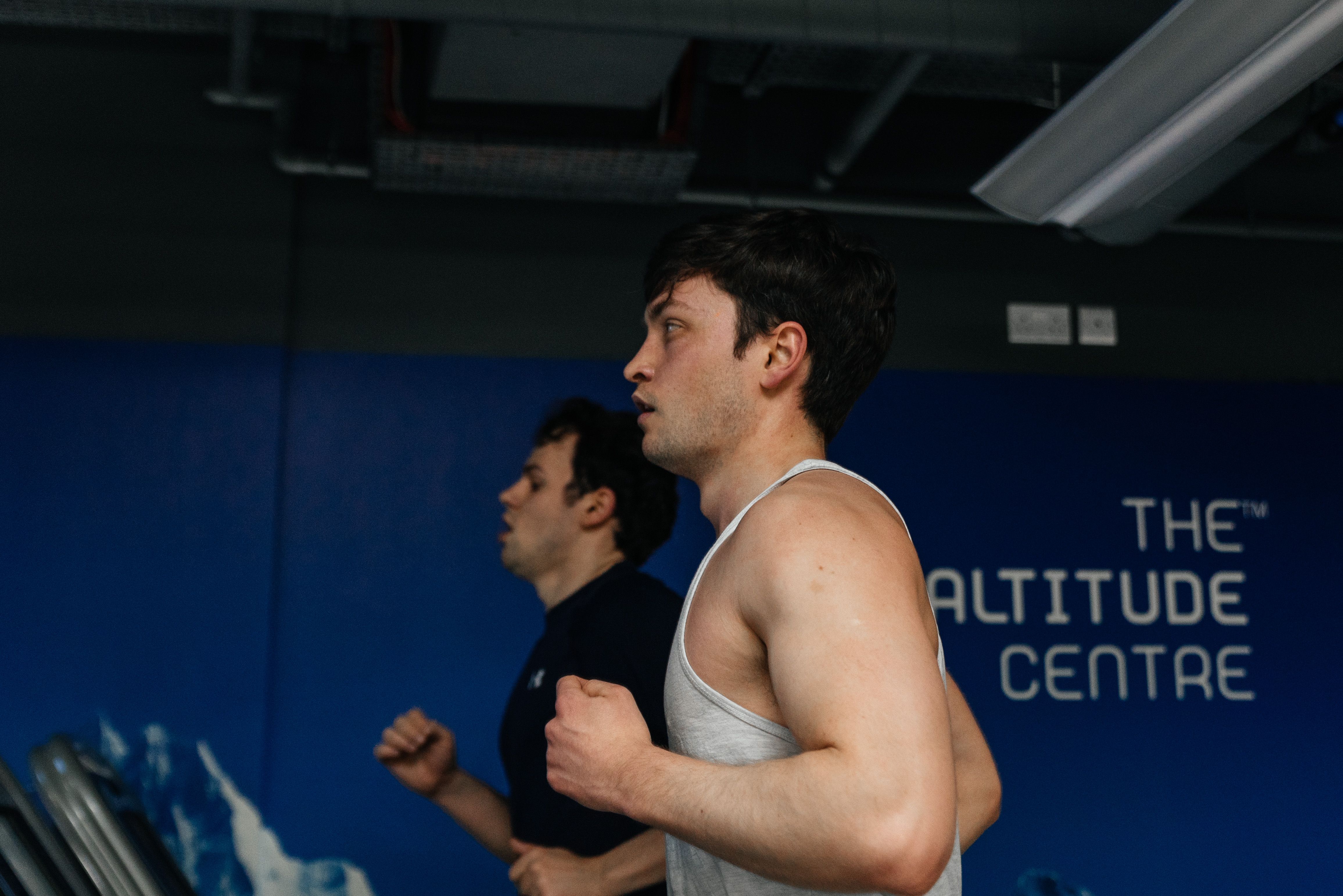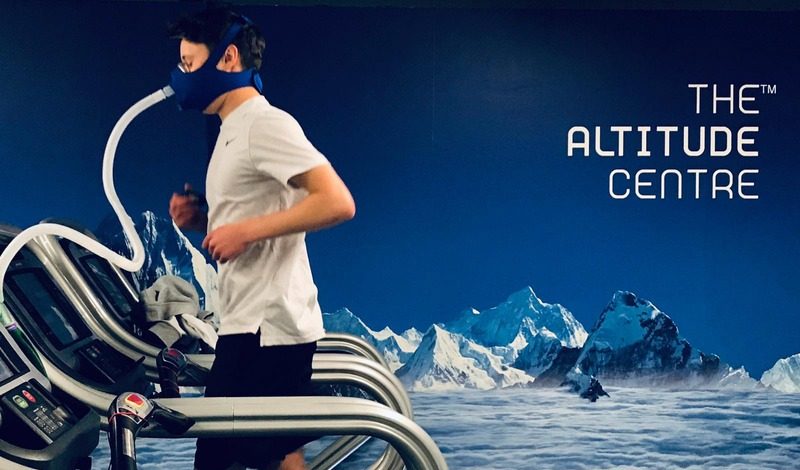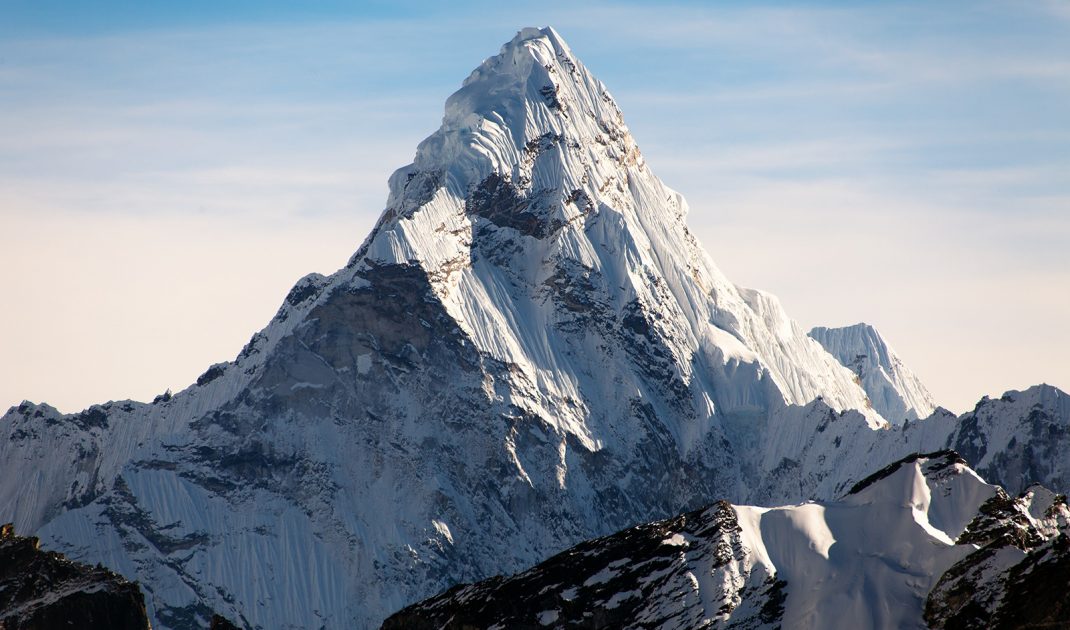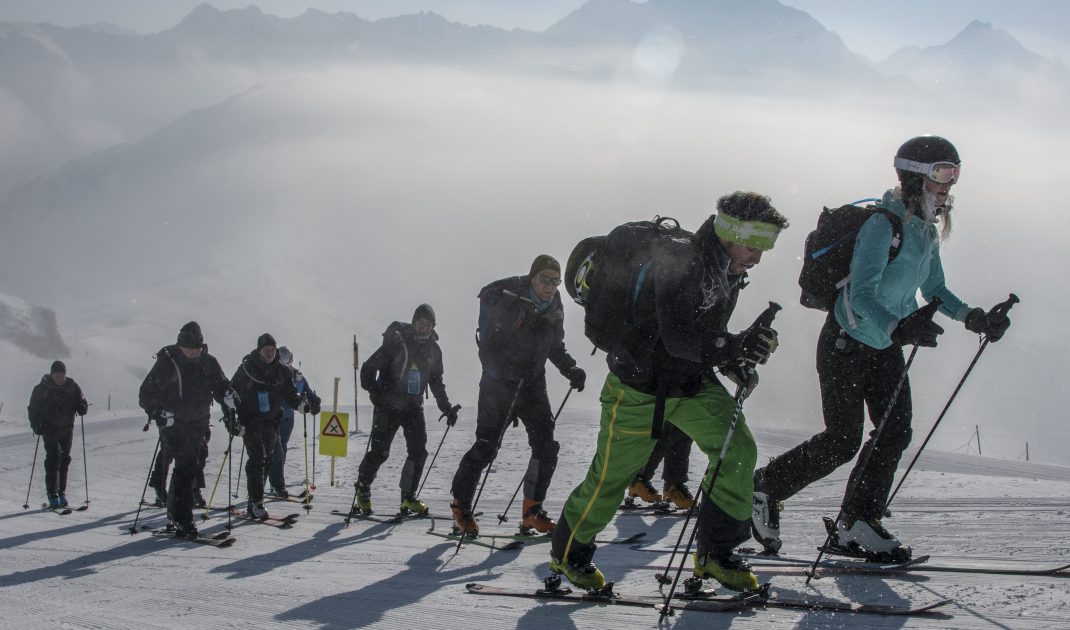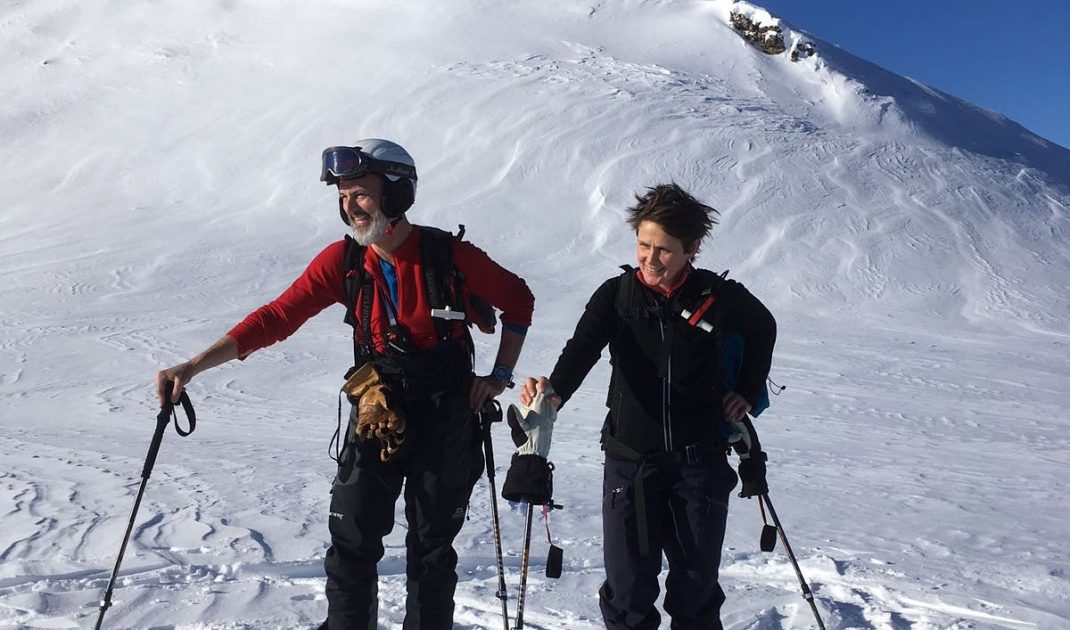How will altitude affect my performance?
Picture this: The sun is shining. You’ve clipped in to your skis. The glorious mountains of the Alps surround you, and you are about to take on your four-day challenge to ascend the height of Everest on a pair of skis. All of your hard work in training has been done, and you can’t wait to get started.
Everest in the Alps 2020, the toughest four-days on skis is about to begin.
The reality is, it might not be so straightforward from here on out. You are now standing in the middle of the Alps, and will be exposed to altitudes up to 3500m, and extreme exertion over the next four days. But how does altitude impact performance, and how can you counteract it?
The impact of altitude on performance
When we travel to altitude, the air is thinner. The atmospheric pressure drops, and for every breath that we take, we breathe in fewer oxygen molecules than we do at sea level, resulting in a reduced blood oxygen saturation (SpO2). Considering that oxygen allows us to exercise aerobically, and is vitally important for endurance performance, you know it’s going to make those gruelling ascents, ~2500m each day, that much more difficult.
During this expedition, you will be exposed to altitudes of up to ~3500m, which equates to a 35% loss in oxygen availability. You can be sure you are going to feel it, and you can be sure it’s going to hurt. Put it this way, Chris Froome stated ahead of the 2019 le Tour de France that altitude would be a “significant factor” in the end result. The tour only reached 2400m at its peak, and that was as they crossed the finish line for that particular stage.
What can I expect to happen to me?
Acclimatisation is the process that our bodies go through, to minimise the decrease in performance, and help us cope with the demands and stressors that altitude creates for our physiology. But what does that mean for you?
Your heart rate increases to compensate for the reduced oxygen availability
For a given intensity of exercise, you can expect an increase of 10-20 beats per minute in your heart rate, which is enough to make walking feel like jogging, jogging feel like running, and running feel like sprinting. The reason for this increase in heart rate is to compensate for the reduced oxygen availability. Your body needs to ensure you are delivering more blood to your working muscles, to maintain a sufficient oxygen supply to power you towards that end goal. But be careful, because it comes at a cost. If you push yourself too hard, and end up in the red zone, it’s very difficult to get back out of it, and get that heart rate back under control.
You breathe faster, and more deeply
You may not notice the increase in your breathing rate, but even at rest you will find that you are having to work much harder to get the required oxygen into the body. Due to the thinner air, and the scarce availability of oxygen, every breath that you take will draw in fewer oxygen molecules, and you will need to breathe more deeply to maintain a sufficient oxygen supply. Expect the need to take breaks occur frequently, just to catch your breath. Be sure to make the most of those recovery breaks! Big, deep breaths, and long exhalations, will help to get your breathing back under control.
Your brain limits your exercise intensity, in a protective response to the altitude
For something that makes up only a small portion (~2%) of your body weight, the brain is particularly oxygen ‘hungry,’ requiring at least 15% of available oxygen to maintain cognitive function. To ensure the supply of oxygen meets demand, blood is preferentially pumped to the brain, away from working muscle. This means, your muscles have fewer nutrients and less oxygen to produce the energy those alpine slopes require, and as a result the intensity of exercise you can perform will drop. The higher you go, the more your legs are going to suffer (just think of those Everest documentaries you may have seen and how slowly climbers are ascending!)
Acute Mountain Sickness (AMS)
You may well have heard all about altitude sickness, or Acute Mountain Sickness (AMS) as it is medically termed, but what does it involve, and will you succumb to it?

Altitude sickness, or AMS, can occur anywhere over 2000m if your body doesn’t adapt well, or we don’t look after ourselves. As an illness, it is very much progressive, and you won’t skip through mild or moderate AMS, straight to severe. Because of this, it is vitally important you know the signs to look out for, to prevent the progression of any symptoms. It is also important to manage yourself well during your challenge, giving your body the best chance of fighting the altitude.
So how exactly can you prepare for altitude, and minimise your susceptibility to AMS?
Acclimatisation. This magic word is what makes climbing, skiing, mountaineering and many other activities possible at high altitude. Your body is capable of acclimatising to altitude, and minimising the effect it has on your performance, but this process takes its time.
High altitude mountaineers will schedule time specifically for acclimatisation on their trips. Whether that is holding the fort for a day or two to adapt, or trekking high and sleeping low. More and more we are seeing mountaineers tackle acclimatisation before they even head to the mountains, especially with shortened expeditions such as the Everest in the Alps, utilising simulated altitude training.
Simulated altitude training
The same way that you would run, when training for a marathon, and cycle if you were training to ride from London to Paris; you can train for altitude in low oxygen environments to improve your body’s ability to cope, and minimise the effects of altitude on performance. Over a period of 6 weeks (although the more time the better), simulated altitude training can improve your ability to cope at altitude through a range of physiological adaptations that take place during the acclimatisation process, ultimately reducing the impact that altitude has on your exercise performance.
Following a block of altitude training, you can expect to see a reduction in your heart rate during exercise at both altitude, and sea level, as you become a more oxygen efficient machine. By doing so, you can ski faster, for longer, covering more distance each day. You will also see increases in SpO2, leading to greater oxygen availability for your legs to carry you up the slopes, as well as reducing your likelihood of the potentially debilitating AMS.
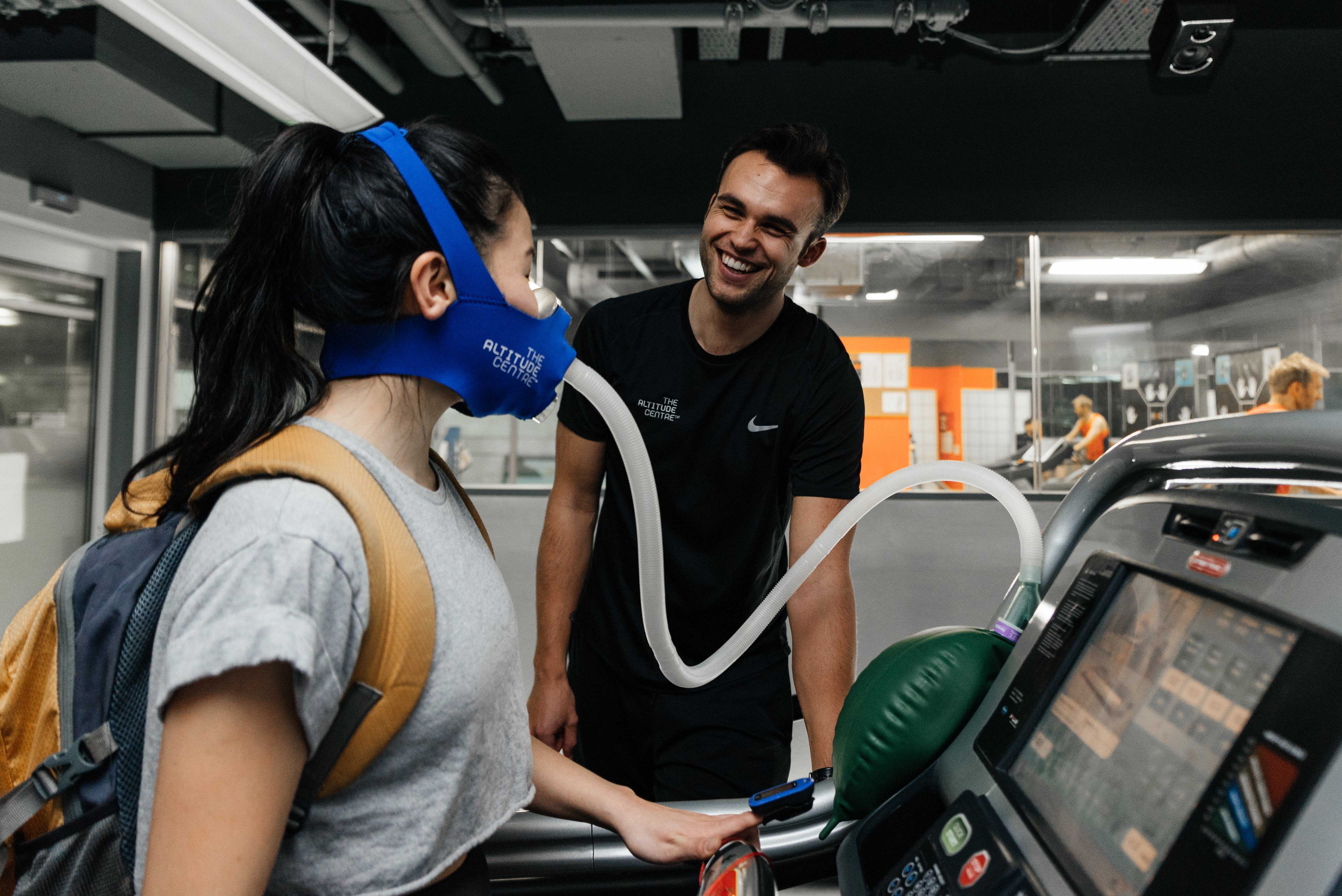
Live Low, Train High
With altitude chambers, and training equipment available, training ‘high’ is easier than ever, even in the UK where the summit of Ben Nevis only just tipples over 1000m above sea level.
By training at simulated altitude, you are preparing your body for the rigours of altitude. You will improve your muscles efficiency with low oxygen through increased capillarisation of the muscle, improving the blood flow into the muscle. You will also see an increase in mitochondrial density, enabling you to produce more energy within those working muscles to attack those gruelling climbs.
As a result of this, you can expect to see a lower heart rate for a given intensity of exercise (at sea-level and at altitude), as well as an increase in your SpO2 (the amount of oxygen available within the blood). All of which will help to fight off the altitude, but will also improve endurance performance, regardless of altitude.
Live High, Train Low
Another option for simulated altitude training, is to sleep at altitude, and train while you sleep. The longer exposures will lead to an increase in red blood cell count (you may already associate this with endurance performance from sports such as running and cycling), which will enable you to transport more oxygen around the body and support the increase in demand that comes with altitude. As a minimum, we recommend spending at least three weeks sleeping at altitude to gain the required benefits and see noticeable improvements in both performance, and acclimatisation – but it just isn’t always feasible to get into the mountains to do so.
That’s where hypoxic tents have been coming to the fore. The tents enable athletes, mountaineers, and health enthusiasts to sleep at altitude in the comfort of their own home, while maintaining their usual training, nutrition, and lifestyle prior to an expedition.
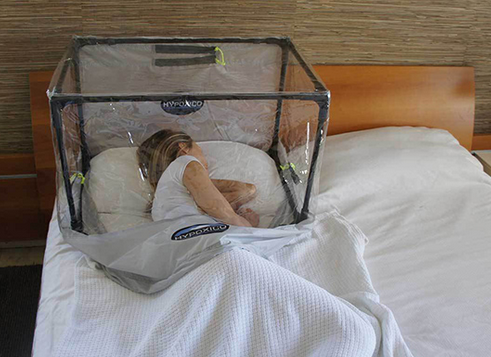

What else can I do to cope better with altitude?
Hydration
Hydration is key. When you are at altitude, you lose more fluids through respiration as the air is drier. You will also almost certainly be working up a sweat, and potentially stopping for more toilet breaks due to the acclimatisation effect. This all adds up to the need to take on board more fluids while at altitude, particularly while exercising. As a guide, we would recommend taking on board ~4 litres each day, to maintain performance, and prevent dehydration.
Nutrition
At altitude, your resting metabolic rate is increased, meaning that you will burn through calories more quickly, and even more so when exercising. So it is vital you are taking on board sufficient fuel to keep you on the go. So eat more? What is so difficult?
The ‘hunger hormone’ ghrelin is inhibited at altitude, which can lead to a suppressed appetite. Remember, just because you may not feel hungry, does not mean you don’t need to eat! Taking high calorie, preferably carbohydrate based, snacks that you can eat little and often on the climbs, and at the rest spots will help keep you on the go.
Avoiding overexertion
We have already established that exercise at altitude is that much more difficult, due to the reduced oxygen availability, so it is important not to get carried away. Push yourself to your limits, but know when you need to ease off. If you are over exerting yourself at altitude, your body is going to struggle to adapt, and you may over stress your body, leading to an increased chance of AMS.
Finally…
Preparation is key to performance, and when it comes to altitude, preparation can mean prevention, which is ultimately a far better way of dealing with AMS than treatment on the mountain, while you take on the toughest challenge of your lives!
The Altitude Centre is the UK’s leading supplier of simulated altitude training equipment. With a high altitude gym based in Central London, and equipment available to hire on a monthly basis, you can train in your own home to prepare for expeditions all over the world.
For more information:
visit www.altitudecentre.com,
or contact the team on city@altitudecentre.com with your queries.
